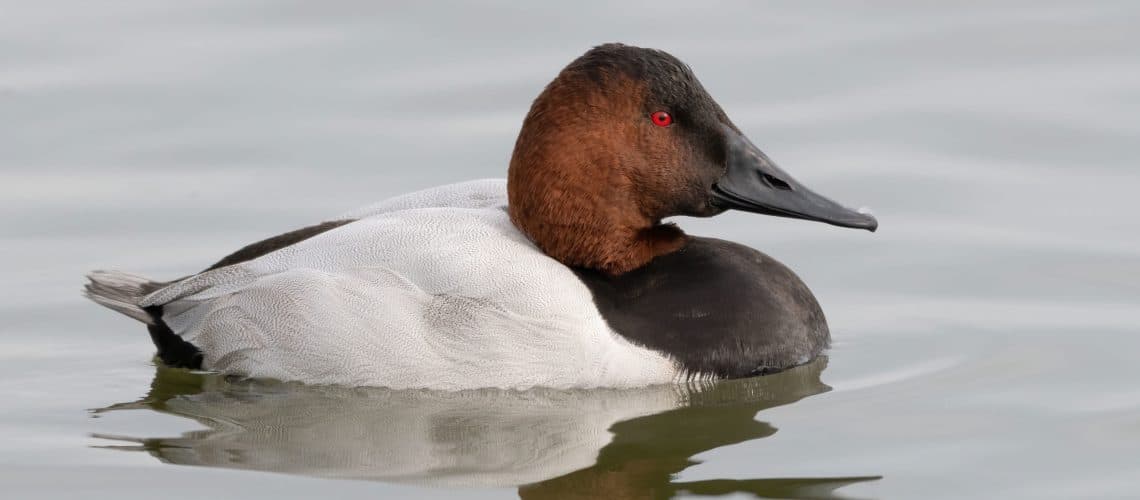
The canvasback is a diving duck that is instantly recognized by its unique ski-slope head profile; there is no angle change between the slope of the forehead and the long, all-black, wedge-shape bill. Male canvasbacks have white sides, flanks and bellies and grayish wings with flecks of black. They sport a chestnut-red head and neck, a black breast, grayish back, black rump and blackish-brown tail. The bill is blackish, have bluish-gray legs and feet and their irises are bright red in the spring but duller in the winter. Female canvasbacks have a light brown head and neck, fading into a darker brown chest and foreback. They have grayish-brown sides, flanks and backs with blackish bills and their legs and feet are bluish-gray.
Canvasbacks prefer semi-permanent wetlands, small lakes, or deep water marshes that contain some form of dense vegetation cover such as reeds, bulrush and cattails while also using shallow river impoundments managed for waterfowl. They feed and rest on the water so their nests are always very close to open water, within one to 20 yards away. They primarily feed on wild celery and pondweeds as well as roots, tubers, grass seeds, and some aquatic invertebrates such as mollusks.
They rely heavily on deep, more stable wetlands for breeding like small lakes, deep marshes, and sheltered bays of larger lakes – spending winters on large lakes and coastal waters.
Wetland destruction and degradation, available nesting habitats are greatly reduced and could result in increased predator activity, which isn’t good for a bird that needs a running start to fly. Recreational boaters can cause canvasbacks to unnecessarily disperse from resting grounds and collisions with power lines and wind turbines also affect their population. Expanding oil and gas development may have a serious impact, with an increased risk of contamination to wetlands.
